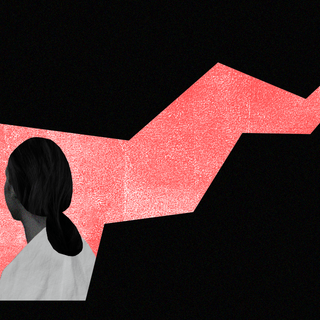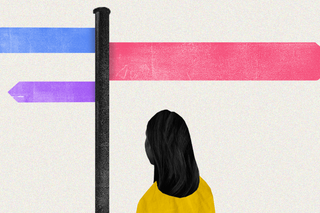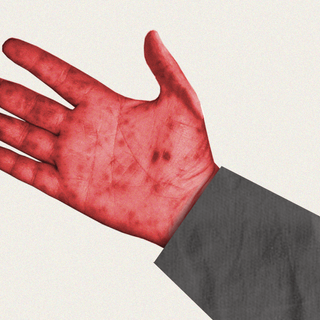
How Travel Distance Decides if Women Get an Abortion
A new study shows that many people “will not be able to overcome the distance barriers to reaching an abortion facility.”

It is indeed a truth both jarring and recurring that distance can determine if, and how, women engage with their pregnancies. Travel for abortion remains a key measure of how reproductive rights and bodily autonomy plays out; others include financial agency and legislations that restrict agency over individual bodies.
Published in JAMA Networklast week, the new assessment on abortion and reproductive care confirms travel distance as a key barrier. Women are twice as likely to delay getting an abortion or decide to continue their pregnancy if they live 80 or more kilometers away from a clinic, compared with women who live within eight kilometers of a clinic, according to the analysis.
“The very stark, loud implication of this study is that many people will not be able to overcome the distance barriers to reaching an abortion facility,” said senior researcher Ushma Upadhyay, an associate professor of reproductive sciences with the University of California, San Francisco School of Medicine.
The context of this research is one of grim turbulence: the future of a reproductive rights legislation that became a cornerstone of women’s rights in the United States, Roe Vs. Wade, is in jeopardy in the country. If the U.S. Supreme Court overturns the legislation, it will be a crime for women in America to exercise their choice and agency with respect to reproductive health. This is keeping in mind that regardless of laws, the demand for abortion from women has continued through time, across generations and cultures. Histories of illegal abortion remain, impacted by the laws and logistics of any time.
Travel distance, then, presents an ideological and tangible obstacle. In the present analysis, researchers looked at the digital behaviors of pregnant women between August 2017 and May 2018. “Most of the studies that have been done so far on barriers to abortion have interviewed patients at clinics,” Upadhyay said. “We found that by interviewing people at abortion clinics, we were not picking up the people whose barriers were so insurmountable that they could never reach a clinic.” The researchers instead reached out to nearly 1,000 women who posed abortion-specific queries on Google, and conducted a follow-up of their attitudes one month later. More than 60% of participants living at any range from the nearest clinic said they had to gather money for travel expenses.
The consequence is best illustrated through this finding: about 20% of those close to a clinic and 24% of those living far away decided to continue their pregnancy purely because distance and subsequently the travel costs were a barrier. Another research also shows that if Roe vs Wade is overturned, the average travel distance for women in America will increase treble — from 40 miles (64 kilometers) to 113 miles (181 kilometers).
Women’s access to any kind of medical care reveals patterns of deeply embedded gender bias. The trend even in India is of a lower number of women patients accessing clinics and hospitals as compared to men. “…the cost incurred on travel has a direct bearing on access to health care for women. The higher the distance of the female patient from the hospital, the lesser the probability of women turning to healthcare,” said Ambuj Roy, a professor of cardiology at AIIMS.
Related on The Swaddle:
Body Matters: Navigating Abortion in India
In 2019, Roy, along with others, conducted a study to analyze treatment-seeking behaviors among people. They found a stark difference in thosewho sought healthcare based on a region’s distance from the national capital (New Delhi): In 2016, 84,926 women from Bihar visited the hospital compared to over 200,000 men from the same state. Monetary expenses are one issue; in most cases, families showed hesitance to bring women to specialized hospitals if it meant spending a lot of money on travel. The findings are unsurprising, for women’s health is a trivial matter that patriarchy systemically devalues.
Travel barriers, as shown in the present study and otherwise, identify the many overlooked pain points in women’s health care. Distance is one thing; but beyond that, women need to arrange child care, take time off work/school/any care work, and make multiple trips for health check-ups. This is if they manage to navigate the stigma and are sufficiently aware of health centers in the vicinity. Barriers to accessing abortion then also show how closely financial agency and mobility are interlinked.
These are problems both fresh and familiar. Yet, there has been little political will and systemic action to bridge the gap. If anything, the distance between the health centers and women is only increasing; according to a study published in The Lancet Public Health journal, the average distance in the U.S. increased between the period 2011 and 2014. The differences were more so in rural regions, echoing a class divide. In India, distance and a shortage of doctors and clinics across villages and peri-urban areas continue to hinder access to safe abortions. The United Nations Population Fund’s State of the World Population Report 2022 showed that about 67% of abortions in India are unsafe.
“Marginalized women, such as sex workers, HIV-positive women, tribal women, single women, and youths find it even more difficult to access abortion. And a lack of access is what leads to unsafe abortions,” Kajal Jain, program coordinator at the Pune-based Mahila Sarvangeen Utkarsh Mandal (MASUM), told DW.
The stigma around abortions, in general, complicates how women access medical care. In many ways, the location of the clinic and spatial difference underscores a critical debate in reproductive rights: the rift between the “personal” and the “public.” Women have had to fight to negotiate their access to the public domain — the city, streets, and world of knowledge and power in general. At the same time, the control and agency they exercise over their bodies and decisions have remained a matter of outsiders’ contention.
A public hostility to abortion looks at personal choice with disdain, and wields this hostility through distance — ideological and physical.
Saumya Kalia is an Associate Editor at The Swaddle. Her journalism and writing explore issues of social justice, digital sub-cultures, media ecosystem, literature, and memory as they cut across socio-cultural periods. You can reach her at @Saumya_Kalia.
Related


Showing Signs of Stress Makes People More Likable, Finds New Study
